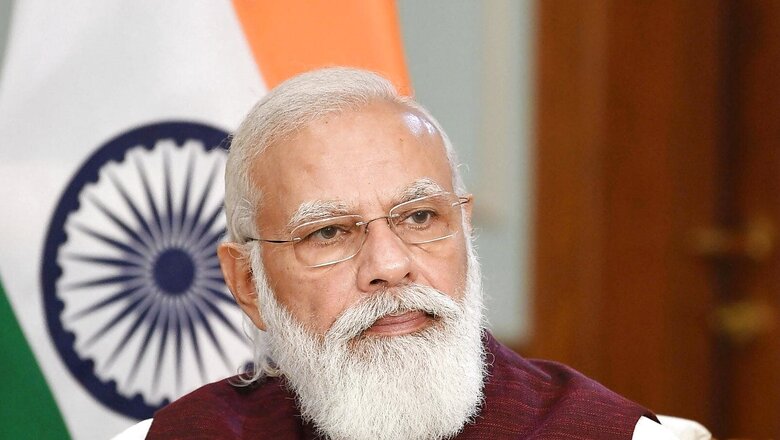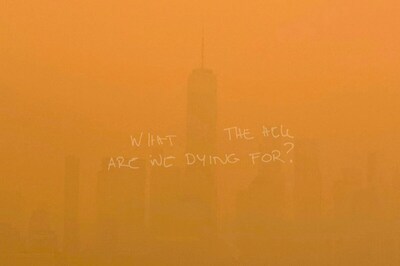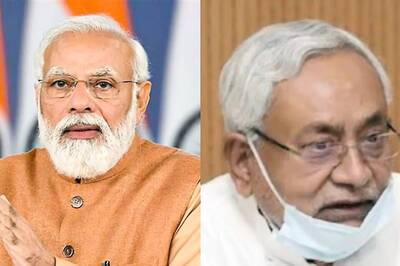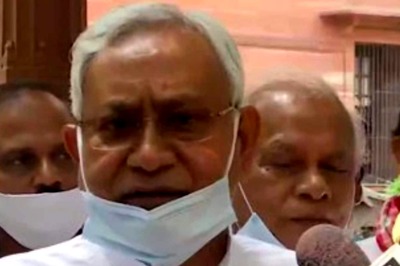
views
Last week, Finance Minister Nirmala Sitharaman announced acquisition of the first tranche of Rs 90,000 crore of Non-Performing Assets (NPAs) from banks by the newly formed “bad bank” National Asset Reconstruction Company (NARCL). Importantly, she also announced a Rs 30,600 crore 5-year government guarantee programme for security receipts (SRs) to be issued by NARCL as part of its overall mandate of resolving Rs 2 lakh crore (~1% of GDP) of NPAs. The assets will be transferred at an average recovery rate of ~18 per cent; 15 per cent (Rs 5,400 crore) of which will be cash and 85 per cent (Rs 306 billion) of which will be the government guaranteed SRs. This is a follow-up to the announcement of creating a bad bank in the 2021-22 Union Budget in February and another big step in the government’s efforts to clean up the lending excesses of the 2007-12 period.
Circa 2014, the Narendra Modi government had inherited a banking system which was on the verge of collapse. The 2007-12 period had seen a solid 20 per cent CAGR (compounded annual growth rate) loan growth, but a lot of it was directed towards select corporate groups and unworthy businesses. Per the 2012-13 Credit Suisse report “House of Debt”, the top-10 borrowers in the country had 13 per cent of all loans in the banking system equivalent to 98 per cent of the banking system’s then net worth. Average group debt to EBITDA for this set of top 10 borrowers was 7.6x and four of the 10 had interest cover of less than 1, all ominous signs of fraying balance sheets.
When the businesses could not generate sufficient cash to service these loans, these loans started turning into Non-Performing Assets (NPAs). Hobbled by this stress on their balance sheet, the share of public sector banks in lending fell from 77 per cent in 2010 to 65 per cent in 2018.
ALSO READ | Bad Bank is for Good Cause but We Must Learn from the Past
The Modi government has initiated a series of measures in the last seven years for the systemic cleaning of the banking system with a sharp focus on recovery—introduction of the Insolvency and Bankruptcy Code (IBC), strengthening of Securitization and Reconstruction of Financial Assets and Enforcement of Securities Interest (SARFAESI) Act and Debt Recovery Tribunals among the key ones. However, the sheer size and complexity of legacy NPAs fragmented across multiple lenders demanded greater clean-up options. Enter Bad Bank.
While NARCL will onboard and warehouse the NPAs, another entity, India Debt Resolution Company Ltd. (IDRCL), will try to sell these stressed assets in the market. While all banks have had their own recovery departments specializing in handling stressed assets, aggregation of debt in a single entity combined with specialized manpower should speed up finding potential buyers, transfer of assets and reworking of new debt terms. Also, as the guarantee ends in five years, there is significant incentive for banks to expedite things at their end. Giving SRs instead of upfront capitalization of banks also prevents any near-term impact on the fiscal deficit.
The NPAs worth Rs 90,000 crore being transferred in the first phase are fully provided assets and write-back of the initial cash consideration of ~Rs 2,400 crore should drive some near-term financial upside (average of ~5 per cent annual profit before tax) for public sector banks (PSBs). Including SRs, net worth of PSBs will be enhanced by 4-5 per cent. Government guaranteed SRs should be zero risk-weighted and wouldn’t need any incremental capital allocation. Further, the sovereign guarantee should help develop a secondary market for SRs giving PSBs the opportunity to sell ahead of actual realization. This should make PSBs more attractive for institutional investors, likely driving uplift in valuations, and boost the government’s efforts of restructuring the banking sector.
Over the last few years, the government has recapitalized the PSB balance sheets to help them stay afloat in the wake of mounting NPAs. This recapitalization has helped the banks hold on to the bad loans, while exploring various options to settle the cases, made possible by the process reforms that have been brought in. The PSBs also had to write down the NPAs, putting an end to the evergreening of loans, so blatantly misused during the credit excess of the last business cycle.
Having brought in regulatory discipline for the PSBs, creating several options for resolving bad debt and making prudent use of capital, the government is now bringing in NARCL, thus completing a logical sequence of events. Since the PSBs may have recognized more than 85 per cent of outstanding loans as NPAs—a painful process which began with the Asset Quality Reviews in 2016—they will stand to gain in case the IDRCL can recover more than 15 per cent of the loan from the assets it manages. Any such proceeds shared with the PSBs will increase their value without any stake dilution for the existing shareholders. Professional management of IDRCL will further help this process.
The NARCL is hence the last step in a series of initiatives, policy decisions, reforms and regulatory clean-up started by the government in 2014. These changes have not only been procedurally and politically difficult but have also required a mindset shift in the financial sector at large. It has taken almost a decade to unwind the ills of the last credit boom.
Having stayed the course, building gradually upon previous successes and plumbing reforms, the NARCL should help in ameliorating the twin balance sheet problem.
Nimish Joshi is Director, Smahi Foundation of Policy and Research. He writes on public policy and governance. Aashish Chandorkar is Counsellor at the Permanent Mission of India to the World Trade Organization, Geneva. The views expressed in this article are those of the author and do not represent the stand of this publication.
Read all the Latest News , Breaking News and Ukraine-Russia War Live Updates here.



















Comments
0 comment